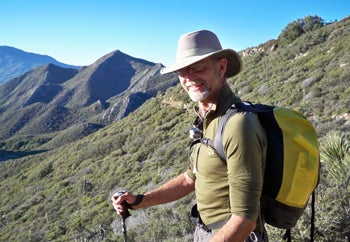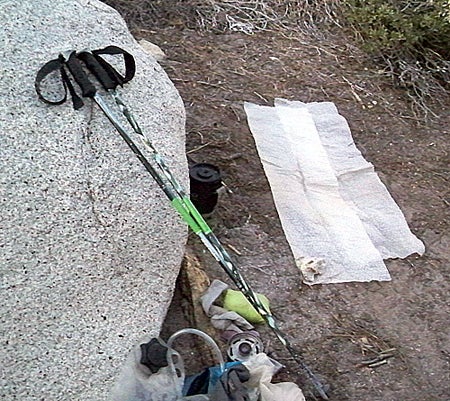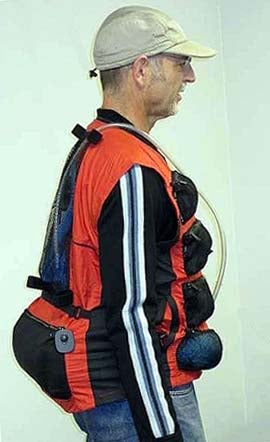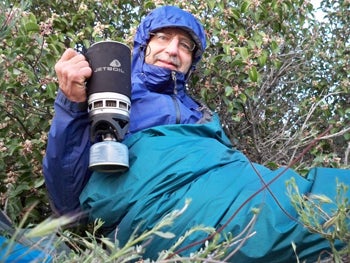
By
Rod Johnson, owner and founder of , took a multi-month journey on the Pacific Crest Trail (PCT) this past summer to push the limits of ultra-light gear. His experiment in minimalism for the great outdoors included more than 1,000 miles of hiking and unconventional gear tricks, such as using bubble-wrap for a camp pad. His food–freeze-dried meals and Clif Bars–was bundled together at night in an odor-proof bag and used as a pillow.
You can take or leave Johnson's unconventional advice. But here are a few field-tested equipment suggestions and trail techniques he employed to trade comfort in camp for a lighter load while walking hours each day on the Pacific Crest Trail.
Food-Bag Pillow: In bear country, many hikers secure a cache of food at night in a tree. Johnson trusted O.P. Sak Odor-Proof Barrier Bags, which are reusable Ziploc-type bags made by Watchful Eye Designs. Johnson's technique was to put his food in a bag, stash it in his backpack, and then use the lump as a pillow.

Bubble-Wrap Sleeping Pad: A thin sheen of plastic served as an ad hoc air mattress for months. It was warm enough for nights down to 50 degrees, Johnson said. But you must “contour” the ground each night by moving dirt and sticks to shape a sleeping spot. A new body-length sheet of wrap– which weighed just 0.9 ounces–was unrolled from a stash every few days at re-supply points as the bubbles deflated under his weight.
Trail Shoes: Boots are out with ultra-light backpackers. Instead, trail-running shoes like the End Sumptown, Vasque Blurs, and Lafuma Sky Race models have enough support for long-duration trips. Johnson tested five pairs during his 1,000-mile hike. Most weighed half of a typical hiking boot.

VestPack: Johnson's own invention, the VestPack is a vest that distributes gear weight equally around your torso (instead of on your back and shoulders). It has eight mesh pockets and a small sleeping bag compartment. But on the PCT, Johnson abandoned the vest after switching to a stove that did not fit in a pocket.
Custom Pack: Commercial suppliers do not often deal in the periphery where ultra-light hikers like Johnson exist. Key items on his equipment list, including his backpack, were custom creations. Minnesota-based Cooke Custom Sewing's Ultralight Pack is made with silicon-coated nylon. It weighs 7.6 ounces and can carry up to 20 pounds of trail weight.

Bivy Bag: For almost 1,000 miles, Johnson avoided carrying a tent. Instead, he slept in the open wrapped in a 6.5-ounce waterproof bivy bag. His bag, made by MontBell, worked with a 16-ounce sleeping bag from Western Mountaineering. The aforementioned bubble wrap insulated his core from the cold earth underneath.
–Stephen Regenold writes about outdoors gear at This column was adapted from a on the site.